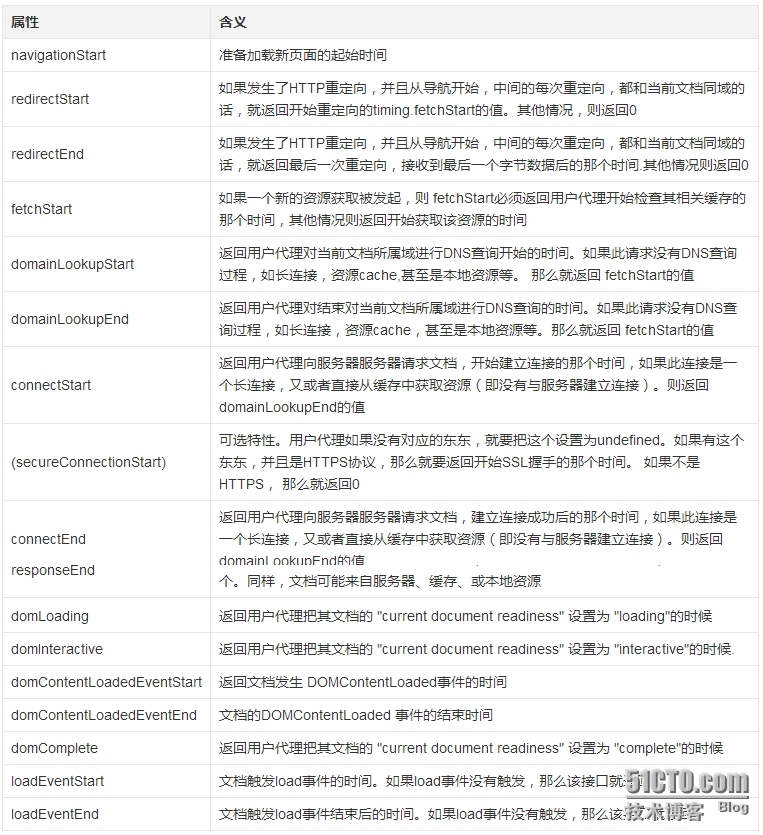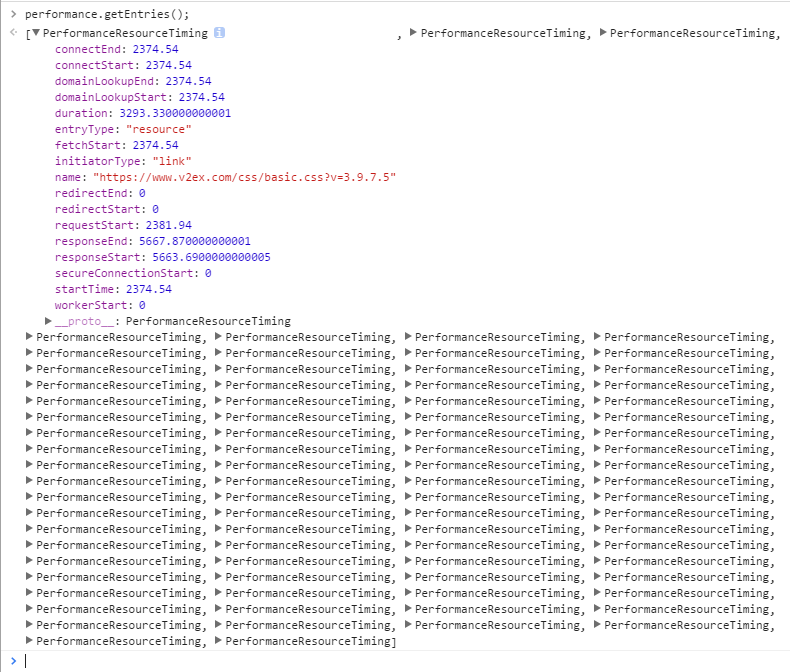## 使用方法
首先贴一下代码 https://github.com/jwcqc/WebViewMonitor
核心其实就是 https://github.com/jwcqc/WebViewMonitor/blob/master/app/src/main/assets/collector.js 这个js文件,当WebView中页面加载完成后,通过重写WebViewClient的onPageFinished(WebView view, String url) 方法,调用WebView的loadUrl方法加载一段JS,新加一个script标签到head标签中,并在script中包含要注入的collecotr.js的url地址,再为加入的script标签添加onload事件,确保该script已加载完成后调用js文件中编写好的的startWebViewMonitor()方法即可,代码如下:
```
String inject = "javascript:" +
" (function() { " +
" var script=document.createElement('script'); " +
" script.setAttribute('type','text/javascript'); " +
" script.setAttribute('src', '" + injectJsUrl + "'); " +
" document.head.appendChild(script); " +
" script.onload = function() {" +
" startWebViewMonitor();" +
" }; " +
" }" +
" )();";
webview.loadUrl(inject );
```
在collecor.js中,分别写有两个方法,用来发送监控信息到Android本地对象中对应的方法上:
```
function sendResourceTiming(e) {
myObj.sendResource(JSON.stringify(e))
};
function sendErrors() {
var err = errorMonitor.getError();
if (err.length > 0) {
var errorInfo = {
type: "monitor_error",
payload: {
url: hrefUrl,
domain: hostname,
uri: pathname,
error_list: err
}
};
myObj.sendError(JSON.stringify(errorInfo))
}
};
```
如上面代码所示,myObj是通过调用WebView的addJavascriptInterface方法添加的一个映射对象,添加的代码如下所示:
```
webview.addJavascriptInterface(new JSObject(), "myObj");
```
在JSObject类中分别有相应的方法:
```
public class JSObject {
@JavascriptInterface
public void sendResource(String msg) {
//handleResource(msg);
}
@JavascriptInterface
public void sendError(String msg) {
//handleError(msg);
}
}
```
到此便可以在sendResource和sendError两个方法中分别对监控到的资源请求数据、js错误数据进行处理,比如保存到数据库或发送给后台服务器等,这个则跟具体的业务有关。
可以发现,整个监控过程只需注入一段js到页面标签中即可,便会在页面中自动引入collector.js文件实现功能,并不需要页面代码进行多余的操作,整个过程非常的方便。
## JS代码的实现
### 页面耗时、资源文件耗时的获得
这个主要是通过Performance API实现的,可以参考以下两篇文章进行了解,也打开浏览器,进入到控制台,输入performance即可进行查看
http://javascript.ruanyifeng.com/bom/performance.html
http://www.bubuko.com/infodetail-1228020.html
在collecor.js中主要用到了页面加载Navigation Timing和页面资源加载Resource Timing,这两个API非常有用,可以帮助我们获取页面的domready时间、onload时间、白屏时间等,以及单个页面资源在从发送请求到获取到response各阶段的性能参数。需要注意的是使用这两个API需要在页面完全加载完成之后,但是由于我们是在onPageFinished方法中才插入的js,因此这一点完全不用担心。
下图是列出了PerformanceTiming对象包含的页面性能属性,其中包括各种与浏览器性能有关的时间数据,可以提供浏览器处理网页各个阶段的耗时

下图能更加直观的展示,这些数据直接的先后次序关系

至于Resource Timing API,这个主要用来获取到单个静态资源(JS,CSS,图片,音频视频等等)从开始发出请求到获取响应之间各个阶段的Timing,可以在Chrome的console中输入performance.getEntries()即可看到效果,它列出了所有静态资源的数组列表,如下图所示:

明白这个原理之后,我们要做的,只需在collector.js中获得这个performance对象,然后取得需要的属性进行格式化然后返回即可,代码实现如下:
```
var performanceTiming = function() {
function navigationTiming() {
if (!e.performance || !e.performance.timing) return {};
var time = e.performance.timing;
return {
navigationStart: time.navigationStart,
redirectStart: time.redirectStart,
redirectEnd: time.redirectEnd,
fetchStart: time.fetchStart,
domainLookupStart: time.domainLookupStart,
domainLookupEnd: time.domainLookupEnd,
connectStart: time.connectStart,
secureConnectionStart: time.secureConnectionStart ? time.secureConnectionStart: time.connectEnd - time.secureConnectionStart,
connectEnd: time.connectEnd,
requestStart: time.requestStart,
responseStart: time.responseStart,
responseEnd: time.responseEnd,
unloadEventStart: time.unloadEventStart,
unloadEventEnd: time.unloadEventEnd,
domLoading: time.domLoading,
domInteractive: time.domInteractive,
domContentLoadedEventStart: time.domContentLoadedEventStart,
domContentLoadedEventEnd: time.domContentLoadedEventEnd,
domComplete: time.domComplete,
loadEventStart: time.loadEventStart,
loadEventEnd: time.loadEventEnd,
pageTime: pageTime || (new Date).getTime()
}
}
function resourceTiming() {
if (!e.performance || !e.performance.getEntriesByType) return [];
for (var time = e.performance.getEntriesByType("resource"), resArr = [], i = 0; i < time.length; i++) {
var i = time[i].secureConnectionStart ? time[i].secureConnectionStart: time[i].connectEnd - time[i].secureConnectionStart,
res = {
connectEnd: time[i].connectEnd,
connectStart: time[i].connectStart,
domainLookupEnd: time[i].domainLookupEnd,
domainLookupStart: time[i].domainLookupStart,
duration: time[i].duration,
entryType: time[i].entryType,
fetchStart: time[i].fetchStart,
initiatorType: time[i].initiatorType,
name: time[i].name,
redirectEnd: time[i].redirectEnd,
redirectStart: time[i].redirectStart,
requestStart: time[i].requestStart,
responseEnd: time[i].responseEnd,
responseStart: time[i].responseStart,
secureConnectionStart: i,
startTime: time[i].startTime
};
resArr.push(res);
}
return resArr;
}
return {
cacheResourceTimingLength: 0,
getNavigationTiming: function() {
return navigationTiming();
},
getResourceTiming: function() {
var timing = resourceTiming();
var len = timing.length;
return timing.length != this.cacheResourceTimingLength ?
(timing = timing.slice(this.cacheResourceTimingLength, len), this.cacheResourceTimingLength = len, timing) : []
}
}
}();
```
最后调用performanceTiming.getNavigationTiming()或者performanceTiming.getResourceTiming()便能返回所有数据。
如果需要获得其他对我们比较有用的页面性能数据,比如DNS查询耗时、TCP链接耗时、request请求耗时、解析dom树耗时、白屏时间、domready时间、onload时间等,可以通过上面的performance.timing各个属性的差值计算得到,方法如下:
> DNS查询耗时 :domainLookupEnd - domainLookupStart
TCP链接耗时 :connectEnd - connectStart
request请求耗时 :responseEnd - responseStart
解析dom树耗时 : domComplete- domInteractive
白屏时间 :responseStart - navigationStart
domready时间 :domContentLoadedEventEnd - navigationStart
onload时间 :loadEventEnd - navigationStart
### JS错误的捕获
只需通过调用addEventListener(type, listener, useCapture),type传error即可,如果对这个方法不熟悉,可参考 http://www.runoob.com/jsref/met-element-addeventlistener.html
```
var errorMonitor = function() {
var errors = [];
return e.addEventListener && e.addEventListener("error",
function(e) {
var eInfo = {};
eInfo.time = e.timeStamp || (new Date).getTime(),
eInfo.url = e.filename,
eInfo.msg = e.message,
eInfo.line = e.lineno,
eInfo.column = e.colno,
e.error ? (eInfo.type = e.error.name, eInfo.stack = e.error.stack) : (eInfo.msg.indexOf("Uncaught ") > -1 ? eInfo.stack = eInfo.msg.split("Uncaught ")[1] + " at " + eInfo.url + ":" + eInfo.line + ":" + eInfo.column: eInfo.stack = eInfo.msg + " at " + eInfo.url + ":" + eInfo.line + ":" + eInfo.column, eInfo.type = eInfo.stack.slice(0, eInfo.stack.indexOf(":"))),
eInfo.type.toLowerCase().indexOf("script error") > -1 && (eInfo.type = "ScriptError"),
errors.push(eInfo);
}, !1), {
getError: function() {
return errors.splice(0, errors.length);
}
}
}();
```
## TODO
1. 目前只是完成了对数据的采集,采集之后对数据的处理还没有进行,但这个跟具体的业务挂钩,不是这篇文章的重点;
2. 现在还只能监控到页面性能数据以及js错误等,下一步考虑支持Ajax,获取ajax请求过程中各个阶段的耗时。